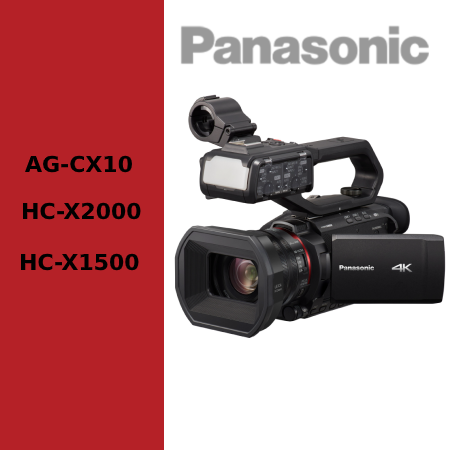News
Panasonic’s next 10-bit 4k is coming soon
Panasonic plans to launch its new AG-CX10 models, the HC-X2000 and the AG-CX10, in March. HC-X2000 and the HC-X1500 with internal 4K and 10-bit recording. Panasonic has always stood out among this type of cameras, which are neither cinema nor DSLR, but nevertheless cover a very important market.
With these new camera models Panasonic wants to enhance the professional video and for this they incorporate the Venus Engine, which is already found in the Panasonic Lumix models. The fact of being able to record in 4K at 10 bits and up to 60 frames per second is also an added bonus, as television and media are gradually catching up and increasingly demand higher resolution. We have to clarify that 4K recording with 4:2:2:2 compression is achieved by recording at 24, 25 and 30 fps, while recording at 60, we obtain images with 4:2:0 compression. These limitations however disappear as soon as we record in HD, and even increasing the frames per second.
In the case of the AG-CX10, as well as being able to record in 4K at 10 bits, it can also output a signal with the same characteristics via HDMI to an external recorder. They also support live streaming via wi-fi, although the top model AG-CX10 is the only one that supports NewTek’s NDI HX protocol for networking. In fact, this same model is capable of connecting to a network with a USB-LAN adapter and having more stable broadcasts.
Moving on to the recording files, here we also find some differences between the 3 models, with the AG-CX10 offering the most options. Among the recording formats accepted by the three cameras are HEVC Long-GOP, MP4 and AVCHD. In addition to these, the A-CX10 also supports MXF, and it remains to be seen if AVC-Intra and LongG are supported as well.
The lens is the same in all 3 models and it is a 25mm wide angle lens with a 24x optical zoom, and can reach 600mm in telephoto.
Other features that are present in all 3 models are Panasonic’s fast and subtle autofocus system, lens rings to operate the camera and adjust the image, internal ND filters, 5-axis stabilization system and LPCM audio recording.
At the moment we do not know the exact date, but the first models are expected to start shipping in March.



